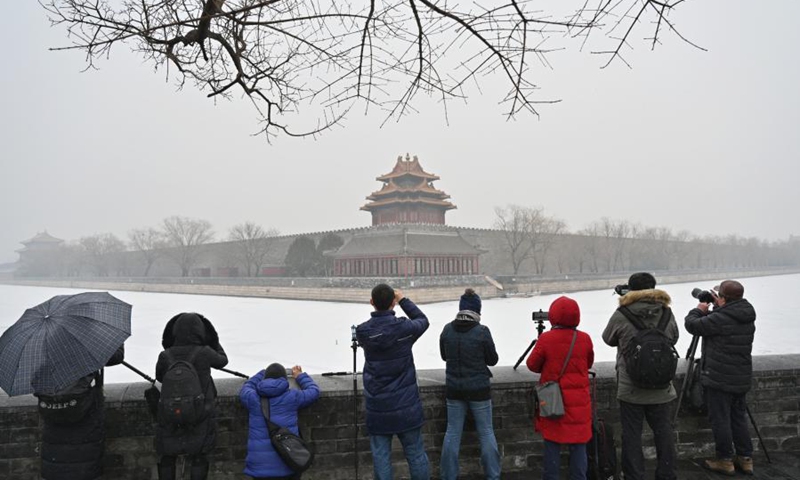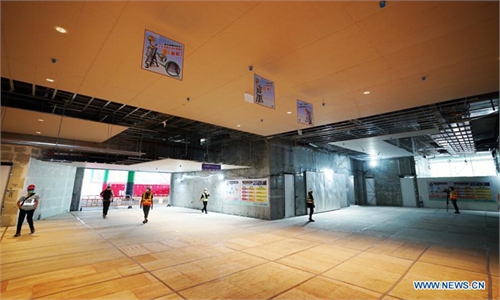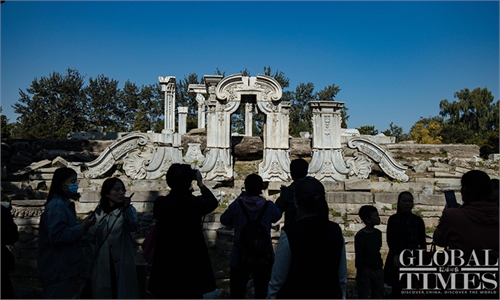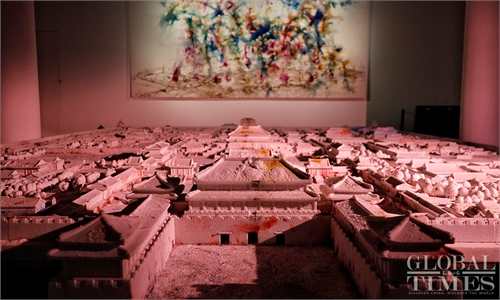
People gather to photograph a turret of the Palace Museum amid falling snow in Beijing, capital of China, Jan. 25, 2021. (Xinhua/Li Xin)
China's largest museum, the Palace Museum, has begun studying the implementation of a new branch for relics' exhibition, repair and storage in the northern part of Beijing after the proposal was recently approved by authorities, said the museum in response to a Global Times inquiry on Monday.
The project was made public on Friday in a document released by China's National Development and Reform Commission (NDRC), in which it approved the overall planning of the project and a budget of 1.97 billion yuan ($300 million).
An employee from the museum told the Global Times that scholars "have been getting down to business" to discuss the detailed construction plan for the "northern campus," while no specifics have been rolled out so far.
The Palace Museum, situated in the Forbidden City in the heart of Beijing, will set up the new branch in Xiyuhe village of Haidian district, in the northwest of the capital. It will cover a total of 102,000 square meters, including 33,000 square meters for cultural relics' exhibition, 25,000 for storage, 16,000 for restoration and 9,900 for digital exhibition, according to the document.
The site where the branch will be built once housed an ancient royal brick kiln, which burned bricks and tiles for the restoration and construction of the Forbidden City during the Ming Dynasty (1368-1644) and Qing Dynasty (1644-1911).
The initial plan for the project was launched in October 2018, according to a statement on the museum's official website.
Shan Jixiang, then-curator of the museum, explained at the launching ceremony that the most important function of the northern branch is the restoration of cultural relics, and addressing issues concerning relics that are relatively large in size, such as furniture, carpets and large paintings, which have been ineffectively protected or displayed due to space limitations.
Shan noted visitors will also be able to observe the traditional techniques used in cultural relic restoration, which have been listed as intangible cultural heritage.
The relics to be put on display at the northern branch are expected to exceed the number of exhibits in the current Palace Museum, with the exhibition area taking up the majority of the campus, Shan added.
The museum, which was listed as a World Heritage Site in 1987 by UNESCO, has a collection of more than 1,863,000 cultural relics. However, the proportion of items displayed is very low. Shan earlier said that 30 percent is an optimal goal.
In the document, the NDRC stressed that flood and seepage prevention measures had to be taken into account during the project design to ensure the long-term safety of the relics.
The news has drawn widespread attention from thrilled netizens, who hailed the project, with some suggesting that the new branch "could be used for the recalled relics now displayed at the 'National' Palace Museum located in Taipei once the island of Taiwan is reunified with the Chinese mainland."



